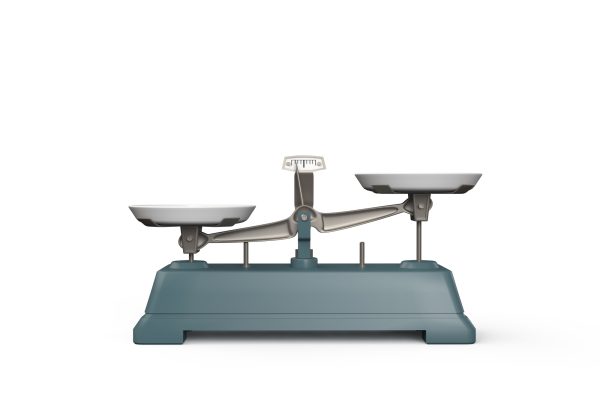Is your Fixed Income likely to stress or disappoint you?
By Kevin Kelly, Portfolio Manager
If analyzed carefully, I believe most fixed investors would not be happy with the current risk versus reward trade-offs they are consciously or unconsciously accepting. Many investors have resorted to one of the following three options in this low yield environment: 1) to essentially avoid interest rate and credit spread (risk premium) risk and dramatically sacrifice yield; 2) to increase yield by owning high quality longer-dated bonds with substantial rate risk; or 3) to increase yield by dramatically raising the risk profile using high yield and/or preferreds with both major interest rate and credit spread risk. Alternatively, there is a sweet spot in fixed income that generates double or triple the first extremely conservative strategy, while also avoiding an unreasonable amount of both interest rate and credit spread risk. The key is security selection, which is critical in the current low yielding fixed income market.Some investors want fixed income portfolio holdings to contain as little credit risk as possible and/or they are afraid of interest rates rising, so they have chosen to own short-dated or floating coupon investment grade securities. While these options are safe, because they are so safe, you are not paid much to own them. The average floating investment grade bond only yields around 0.4% (before any ETF expenses or management fees). Short-dated fixed coupon investment grade bonds do not offer much more yield. The average 1-year investment grade bond yields less than 0.4%, and 3-year investment grade bonds only yield approximately 0.8% (before any fees). These securities are too conservative for investors looking to preserve value over time, once we take inflation and taxes into account.
Other investors opt to own very long-dated investment grade bonds, because they are chasing yield, but they are taking considerable interest rate and credit spread risk. What is worse is sometimes investors forget that a higher price dictates a lower yield. Investors should be careful not to adopt a ‘stock mentality’ that bond investments that have already worked can keep working. Unfortunately, a higher bond price means less future return (fixed income security prices cannot rise indefinitely because all yields would then eventually go negative). On the other hand, a stock can rise 10%+ a year forever if the company keeps growing. Additionally, owning longer-dated securities can be very stressful when interest rates start rising as happened early in 2021 and again recently, driven by relatively high inflation data and strong economic growth. As a reminder, the average investment grade bond has substantial interest rate risk and still only yields just over 2% currently. This very high interest rate sensitivity explains why, despite earning interest for seven and a half months in 2021, the return on the average investment grade bond is still negative in 2021.
Aggressive fixed investors in their search for yield have increased their risk exposure and now own primarily high yield and/or preferreds. However, if high yield and preferred securities are not chosen extremely carefully, the chance of losses increases considerably. The expected yield on high yield bonds is now near all-time lows (see the graph below), so there is considerable risk in such positions. While the economy is continuing to recover from the Covid-induced recession, investors are simply not getting compensated very much to take on incremental risk. The thirst for yield appears to have overpowered the discipline among many fixed-income investors. Any potential market sell-off or economic hiccup could be quite painful given the minimal margin of error of owning high yield bonds. Are there still interesting high yield bond opportunities? Absolutely. Investors, however, must be very selective. We generally prefer to stick with relatively good quality names that mature in the relatively near future.

Regarding preferreds, the market’s appetite appears insatiable. We are seeing several I.G. rated preferreds issued in the low 4% coupon range. The enormous risk of owning low, fixed coupon preferreds is often underappreciated. If a company issues a 4% coupon preferred, and subsequently interest rates increase or credit spreads (risk premiums) revert to wider levels, an additional 1% in yield could depress the value of the preferred by 20%. It is doubtful that most investors who bought many of the new issues realize the risk they are taking. Therefore, while attempting to earn an extra 1% a year for 5 years, an investor risks losing 20% should interest rates or credit spreads rise by 1%. If you consider the recent pre-Covid environment, preferred yields rising by 1% is clearly feasible (due to interest rates and/or credit spreads.
The reality is that each fixed income security is quite unique given the significant differences in credit quality, coupon, maturity, trading price, and of course yield. Recognizing if a security is potentially compelling or troublesome requires individual security analysis. At ACM, we currently focus on offerings at the lower end of investment grade (BBB/BBB-), because these securities typically provide incremental yield for what we deem as marginally more risk. We can also choose investment grade options with less interest rate sensitivity. Among preferreds, we are choosing investment grade opportunities that provide attractive additional yield well in excess of most investment grade bond yields. We are exceedingly picky, which is essential, to safeguard against the sort of downside risks illustrated by the example previously discussed.
The foregoing content reflects the opinions of Advisors Capital Management, LLC and is subject to change at any time without notice. Content provided herein is for informational purposes only and should not be used or construed as investment advice or a recommendation regarding the purchase or sale of any security. There is no guarantee that the statements, opinions or forecasts provided herein will prove to be correct. Past performance may not be indicative of future results. Indices are not available for direct investment. Any investor who attempts to mimic the performance of an index would incur fees and expenses which would reduce returns. Securities investing involves risk, including the potential for loss of principal. There is no assurance that any investment plan or strategy will be successful.




LATEST ARTICLES